Abstract
Prompted by previous reports on muscle thixotropy, we have investigated changes in inherent and reflex stiffness of the finger flexor muscles of human subjects at rest, following transient conditioning manoeuvres involving contractions and/or length changes of the finger flexors. The stiffness measurements were combined with electromyographic recordings from forearm and hand muscles and with microneurographic recordings of afferent stretch responses in finger flexor nerve fascicles. Finger flexor stiffness was evaluated by measuring (a) the flexion angle of the metacarpo-phalangeal joints at which the system during rest balanced the force of gravity and (b) the speed and amplitude of angular finger extensions induced by recurrent extension torque pulses of constant strength delivered by a torque motor. In the latter case, extension drifts in the resting position of the fingers were prevented by a weak flexion bias torque holding the fingers in a pre-determined, semiflexed position against a stop-bar. Stiffness changes following passive large amplitude finger flexions and extensions were studied in subjects with nerve blocks or nerve lesions preventing neurally mediated contractions in the forearm and hand muscles. Inherent stiffness was enhanced following transient finger flexions and reduced following transient finger extensions. The after-effects gradually declined during observation periods of several minutes. Similar results were obtained in subjects with intact innervation who succeeded during the pre- and post-conditioning periods in keeping the arm and hand muscles relaxed (i.e. showed no electromyographic activity). In these subjects it was also found that the after-effects were similar for active and passive finger movements and that isometric voluntary finger flexor contractions loosened the system in a way similar to finger extensions. In some subjects electromyographic reflex discharges appeared in the finger flexors in response to the extension test pulses. When elicited by small ramp stretch stimuli of constant amplitude, the stretch reflex responses were found to vary in strength in parallel with the changes in inherent stiffness following the various conditioning manoeuvres. The strength of the multi-unit afferent stretch discharges in the muscle nerve, used as index of muscle spindle stretch sensitivity, varied in parallel with the changes in inherent stiffness. Post-manoeuvre changes in muscle spindle stretch sensitivity were seen also when the spindles were de-efferented by a nerve block proximal to the recording site. The results can be explained in terms of thixotropic behaviour of extra- and intrafusal muscle fibres.(ABSTRACT TRUNCATED AT 400 WORDS)
Full text
PDF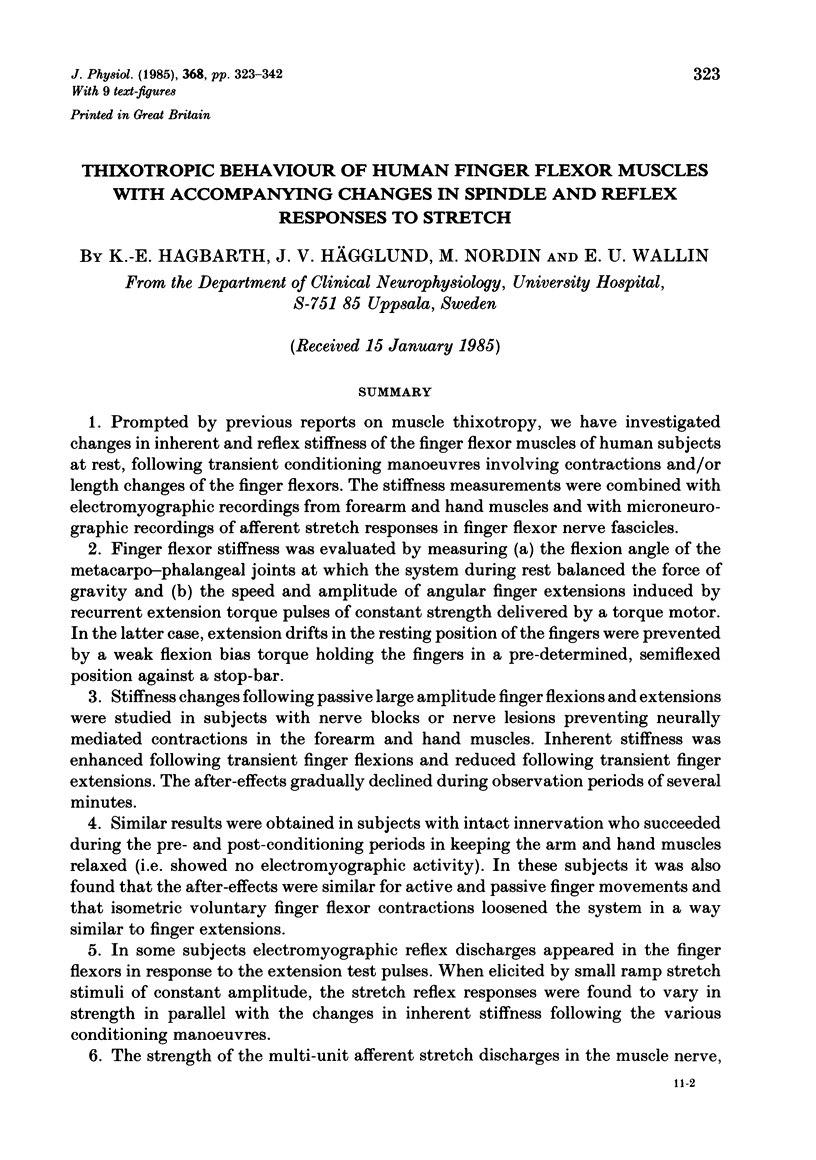
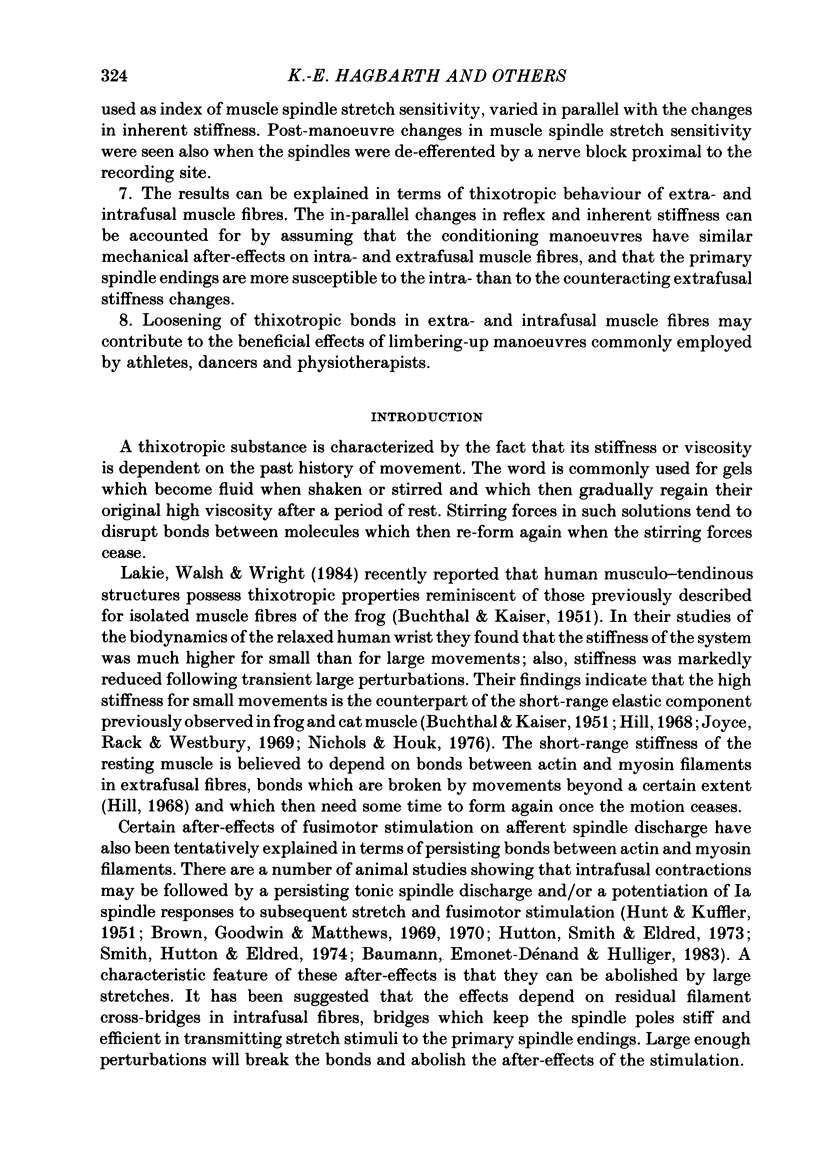
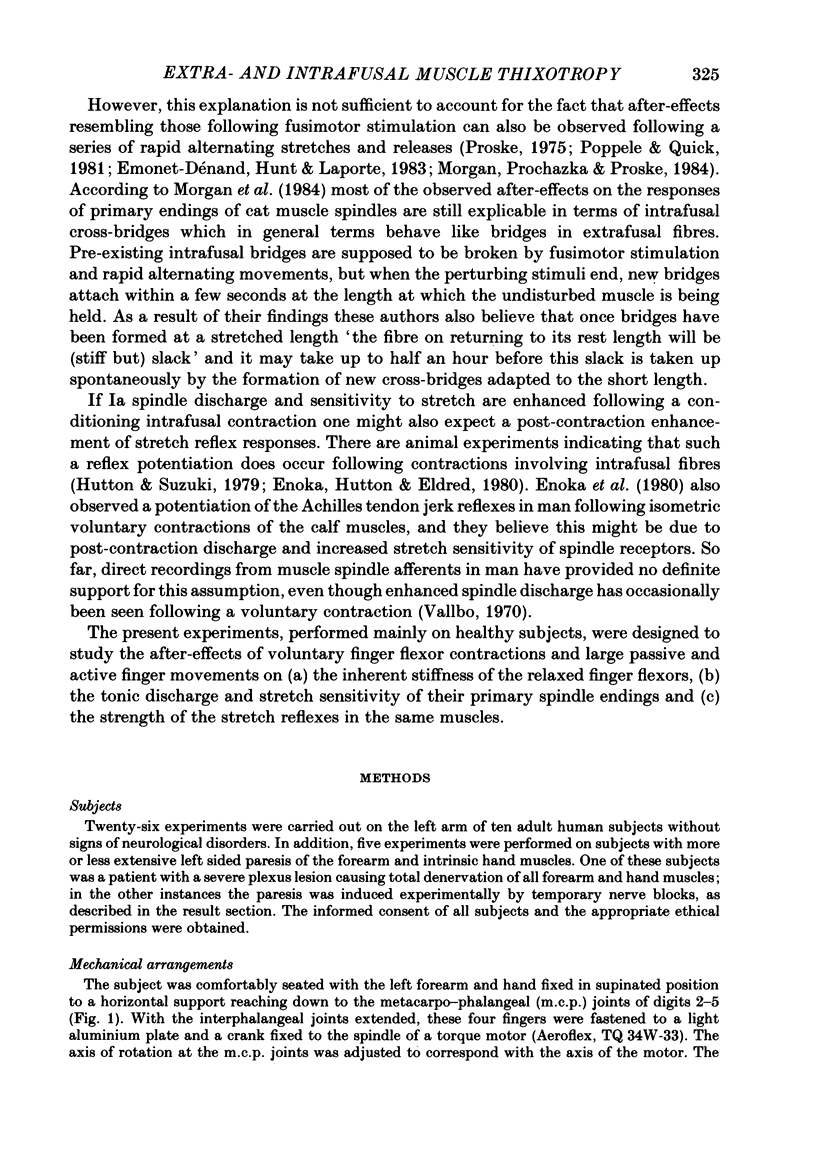
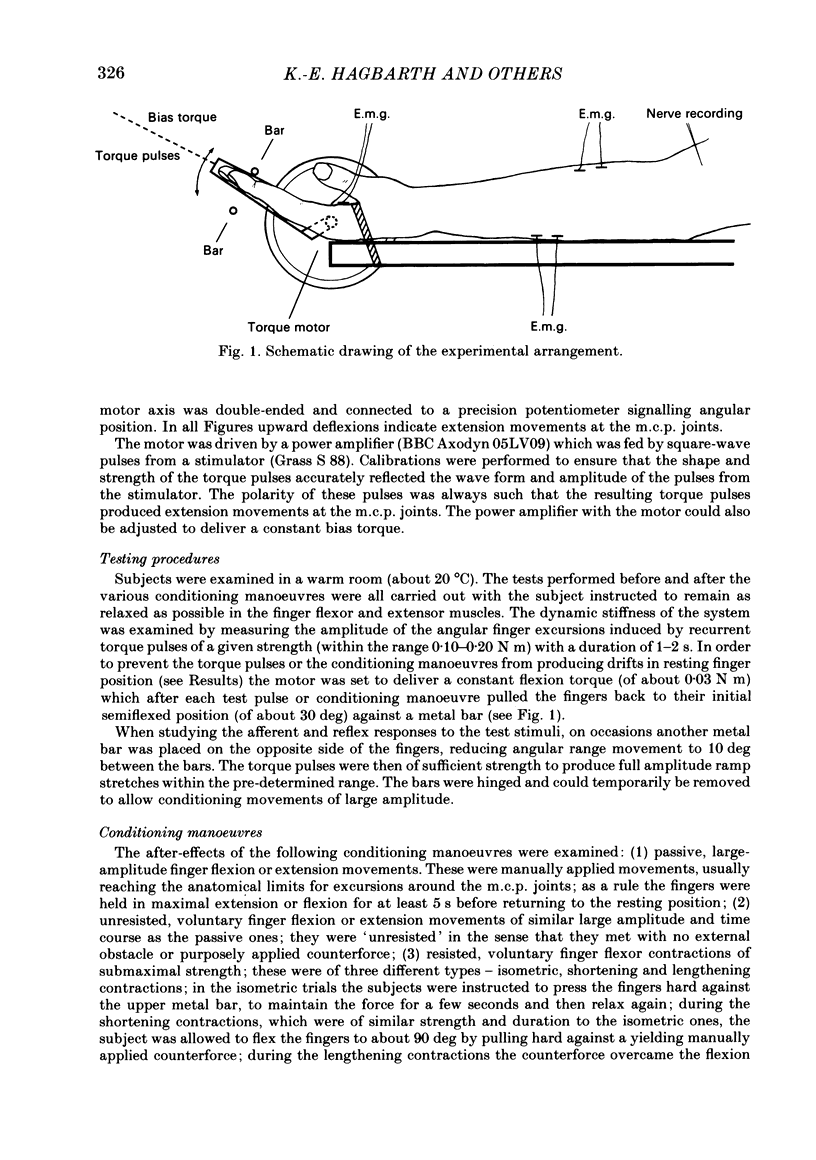
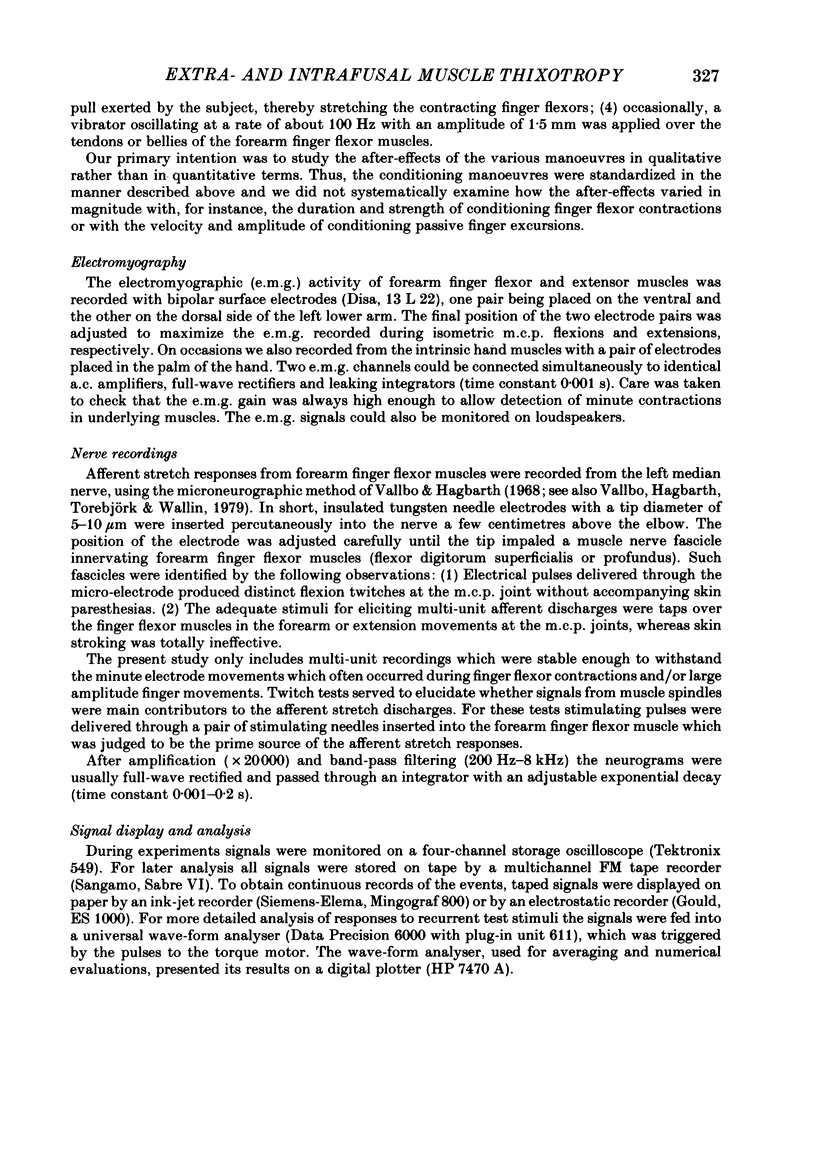
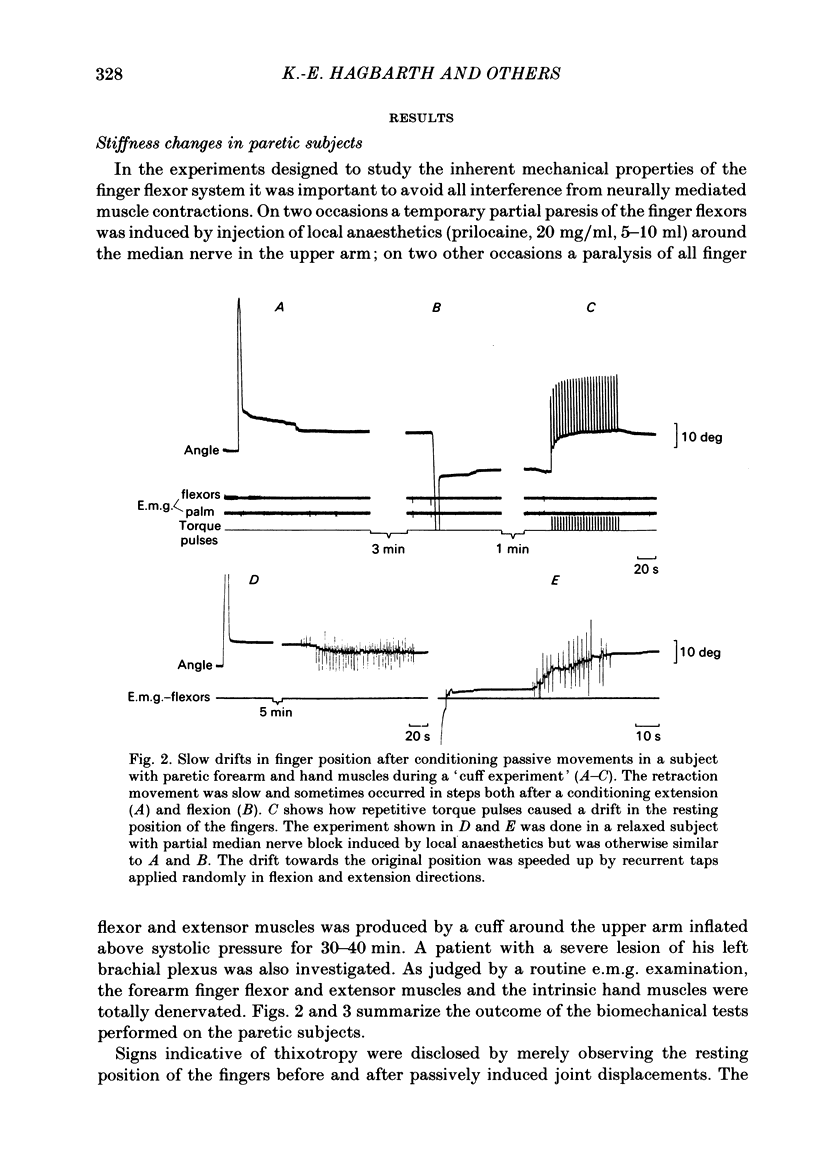
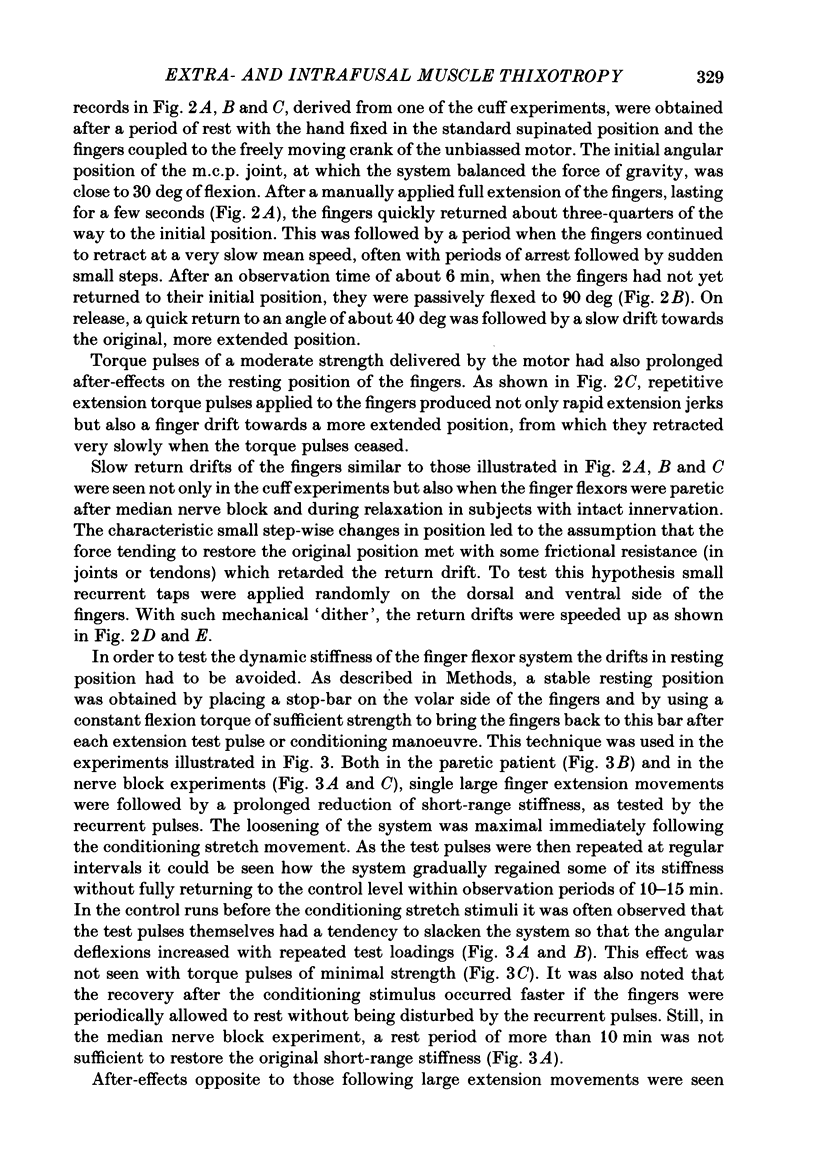

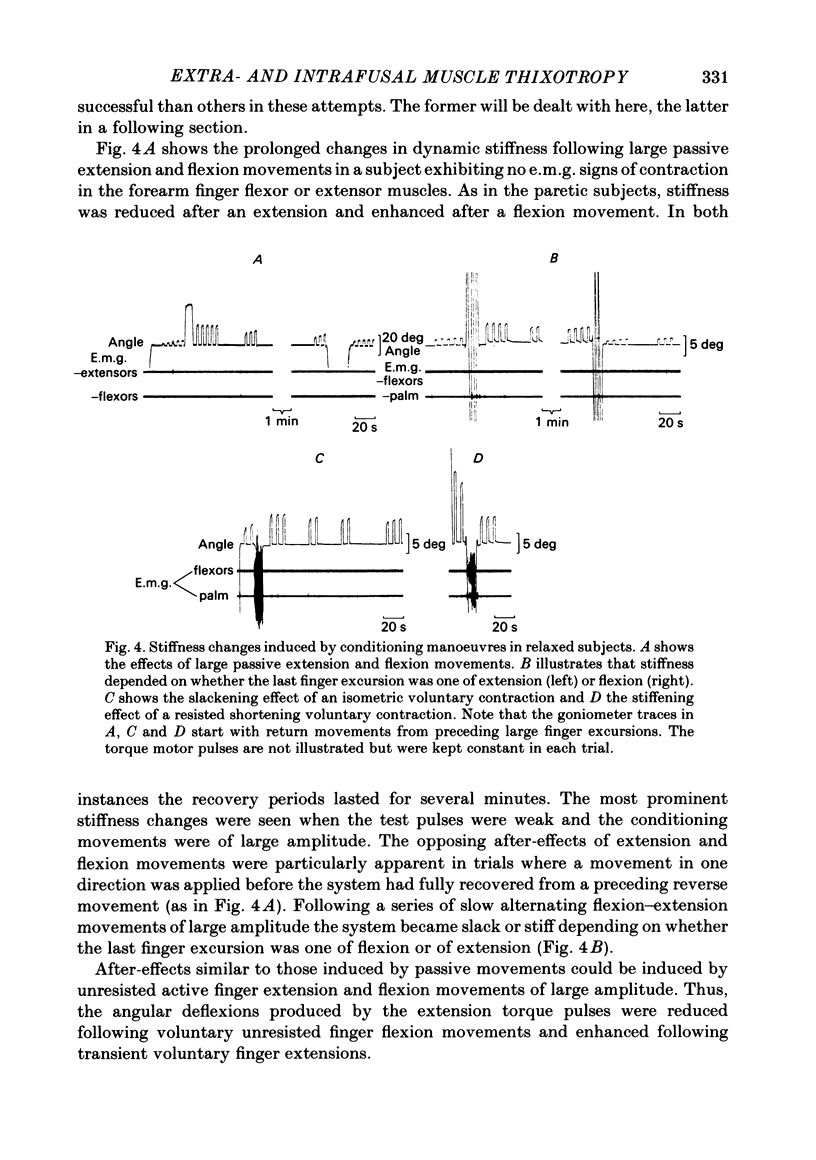
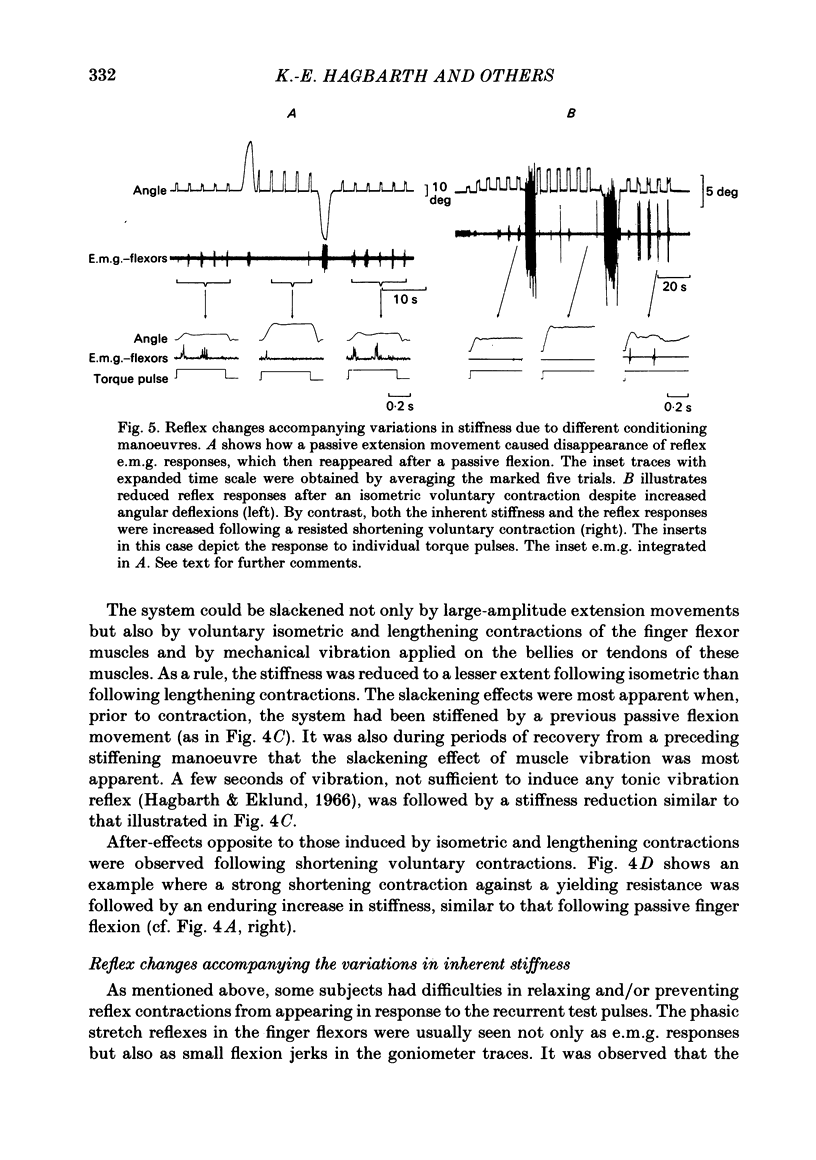
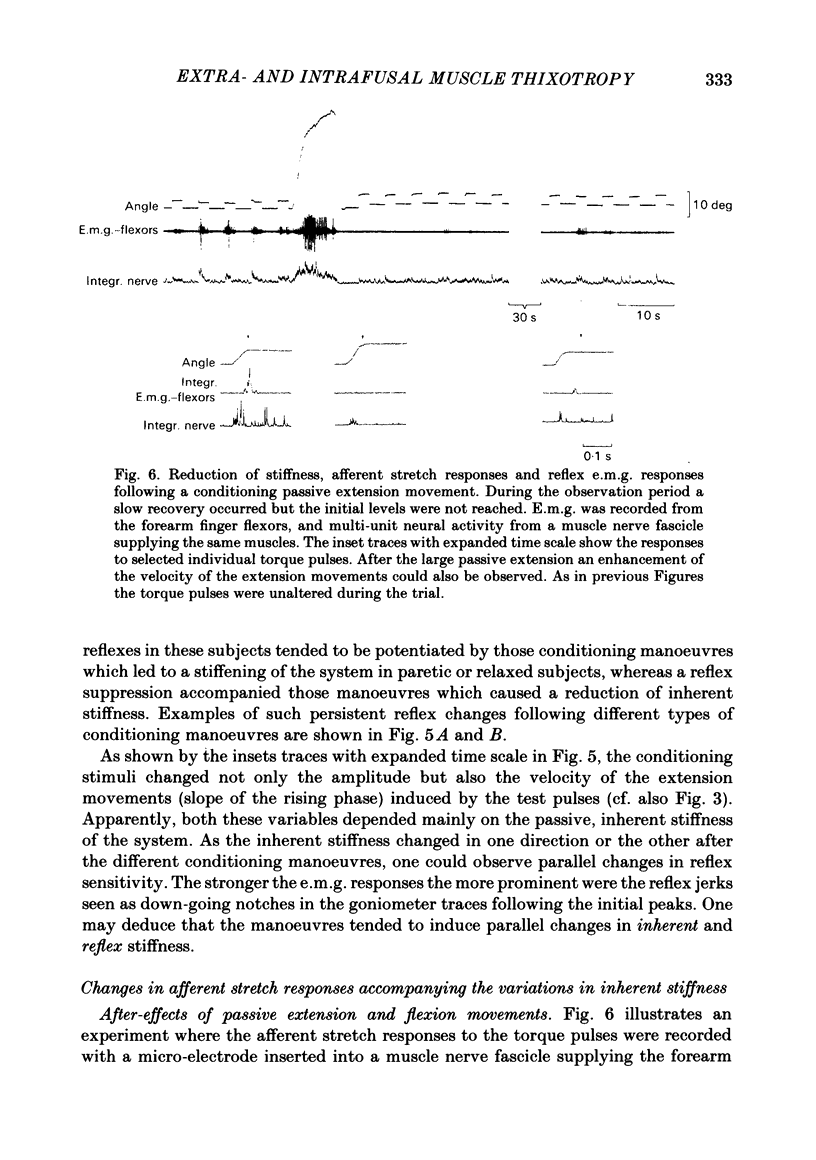
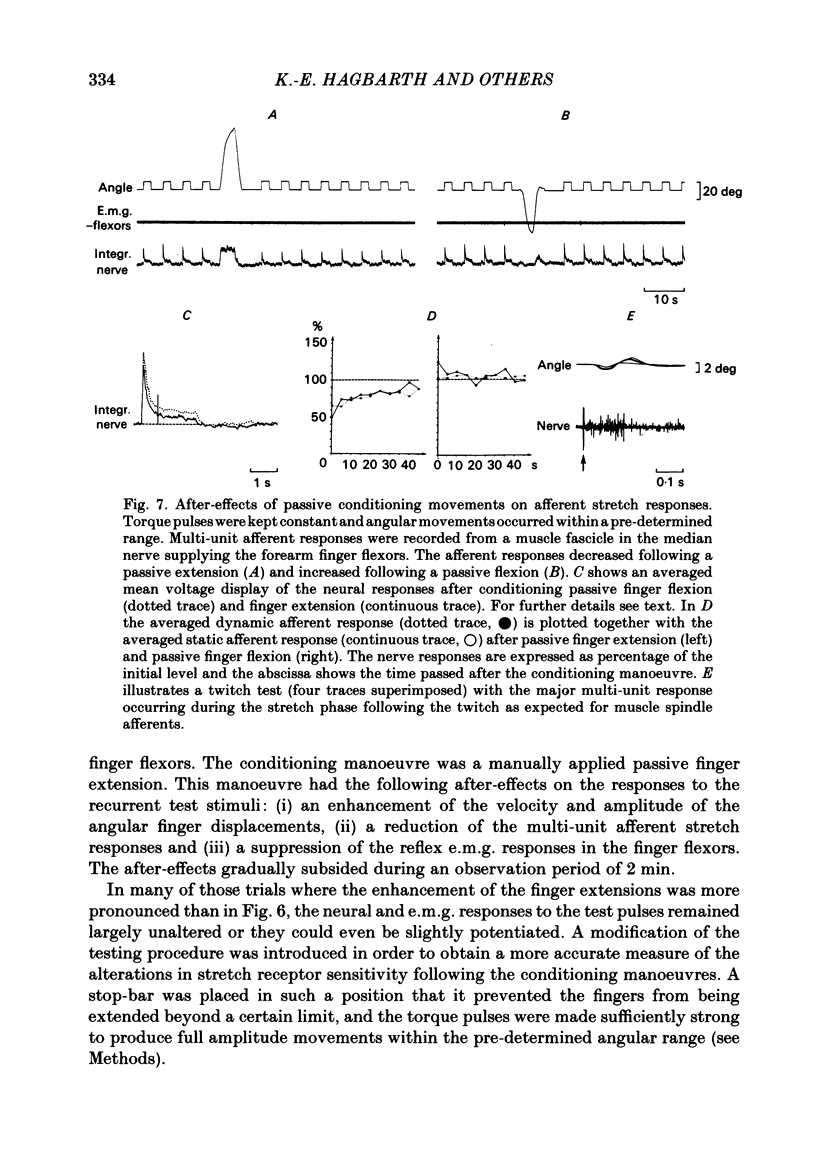
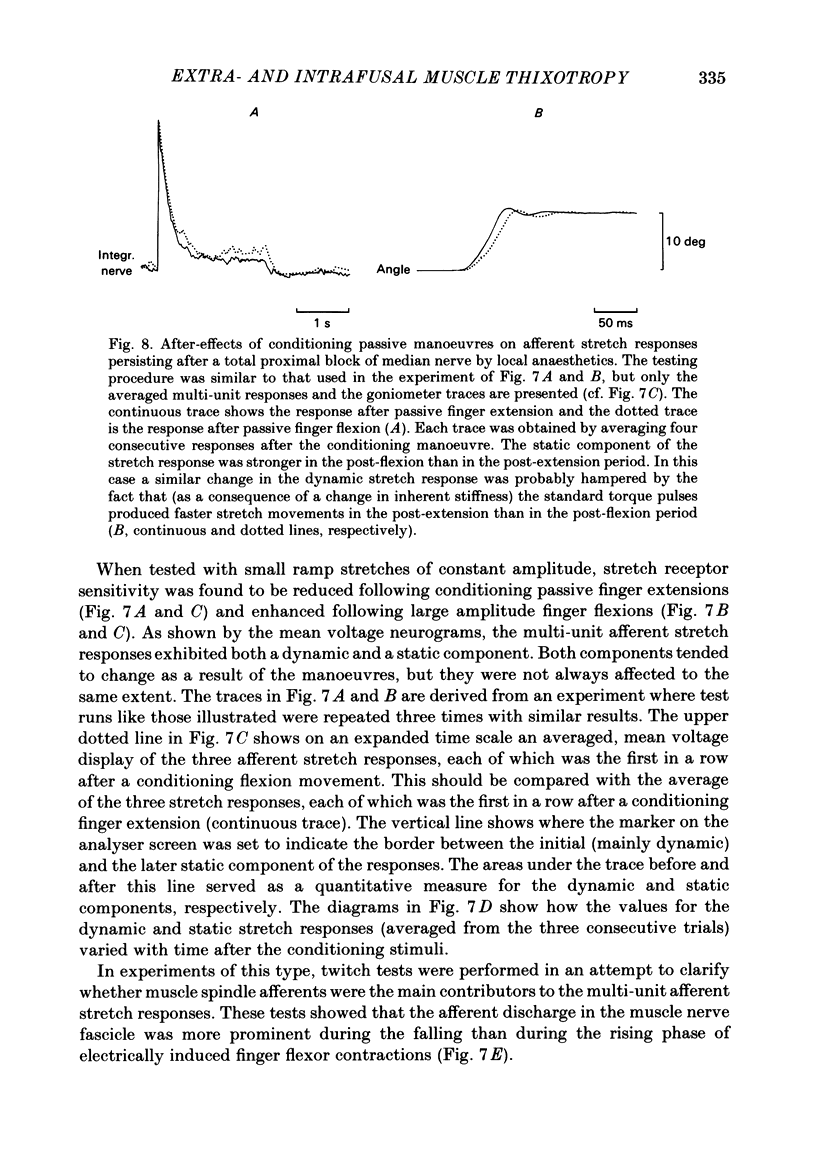
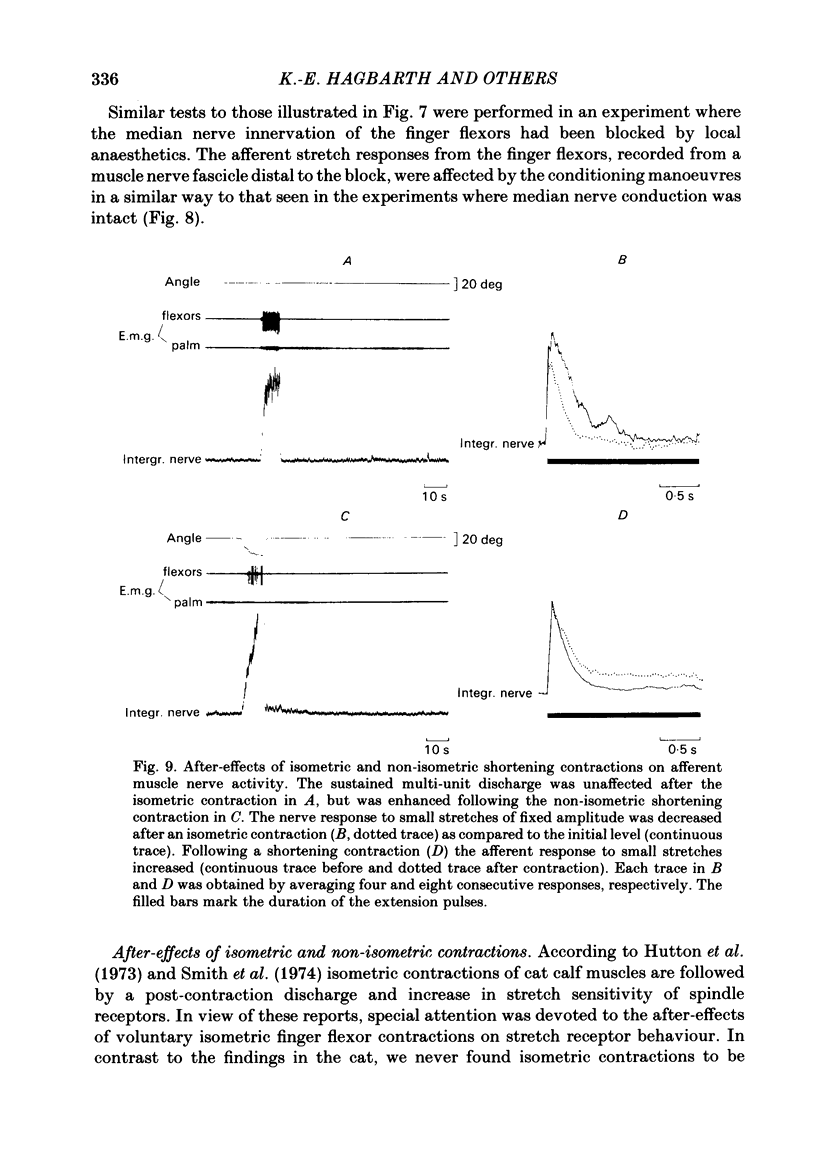
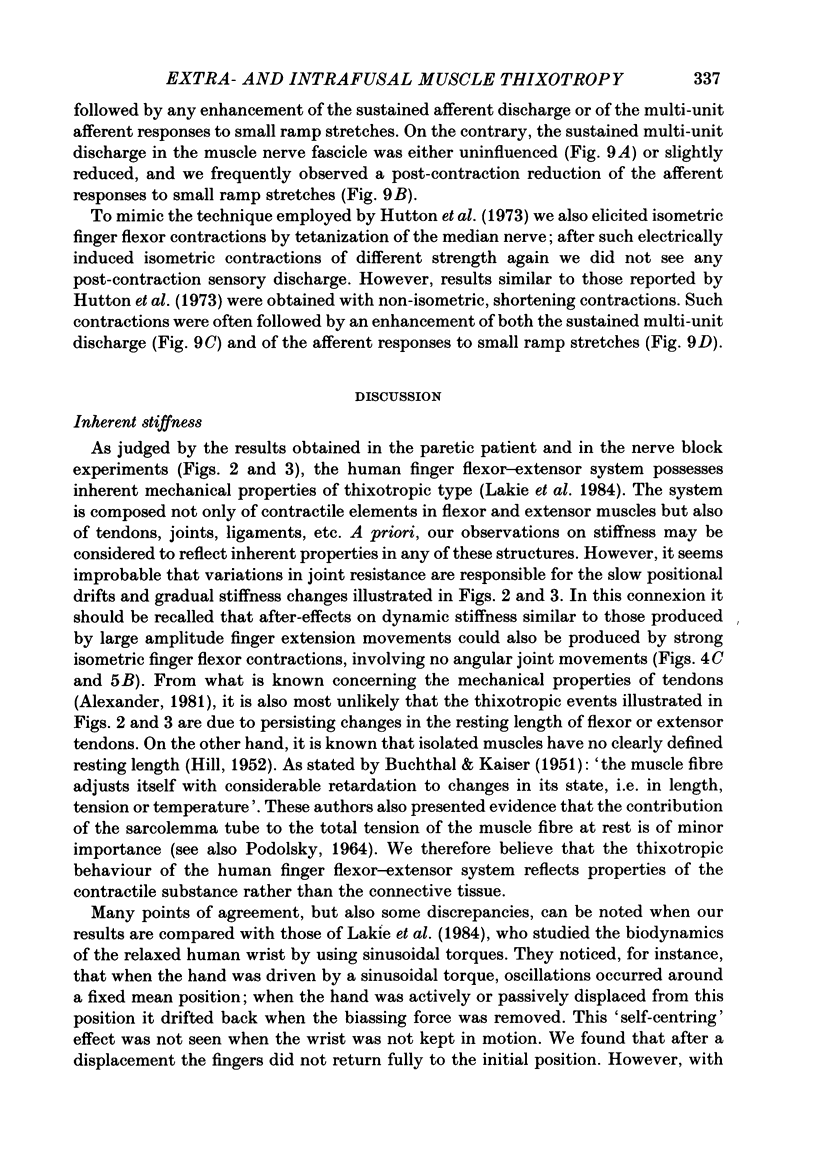
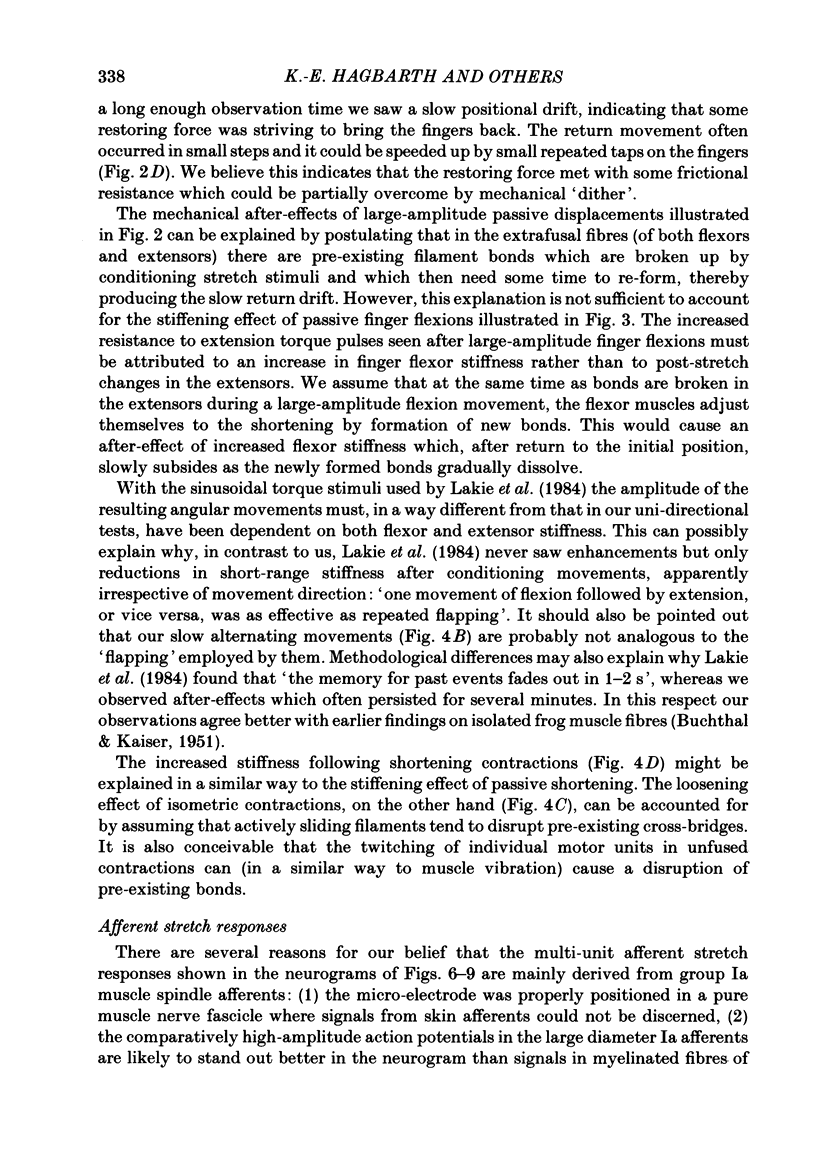
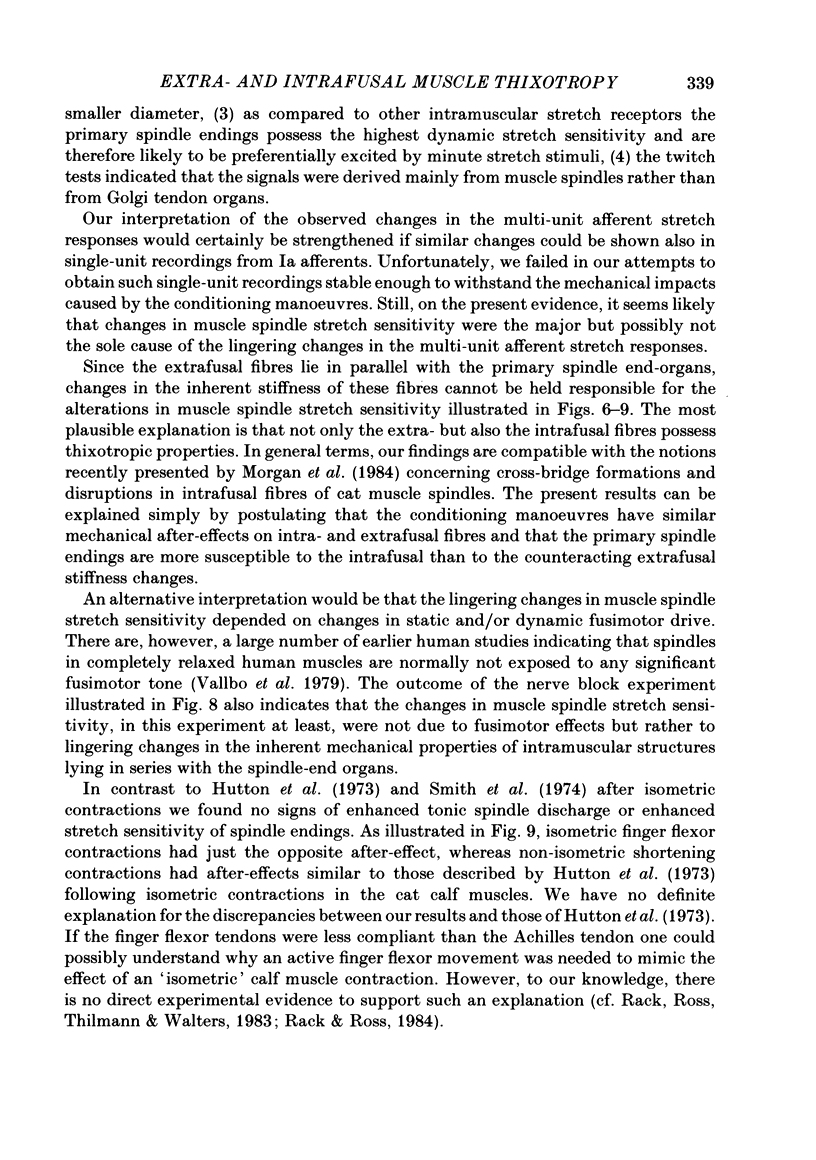
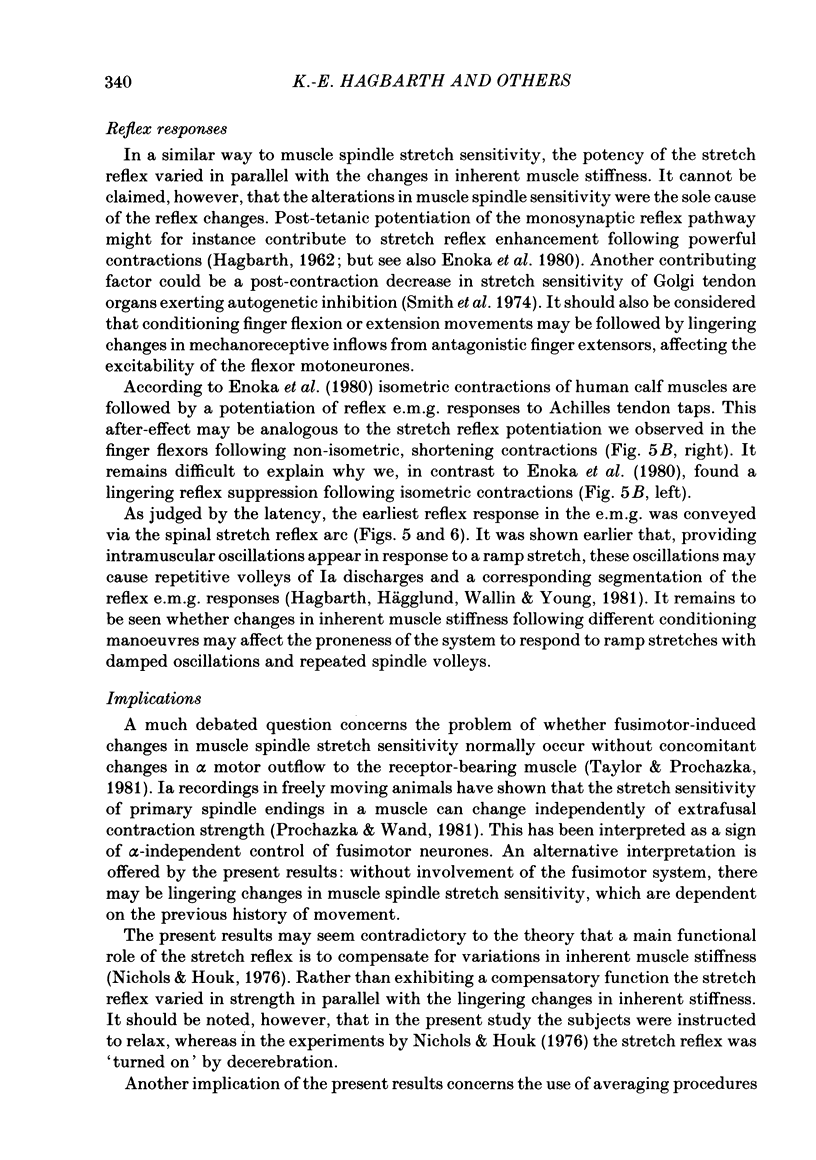
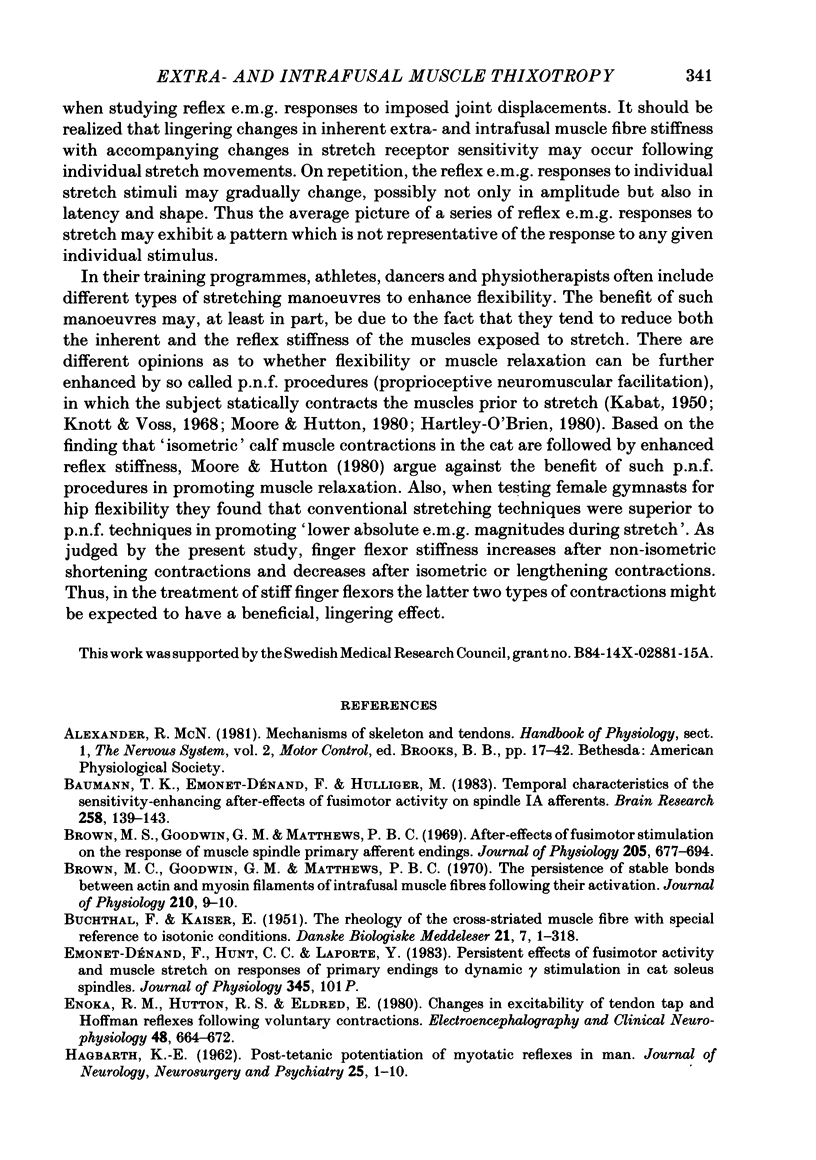
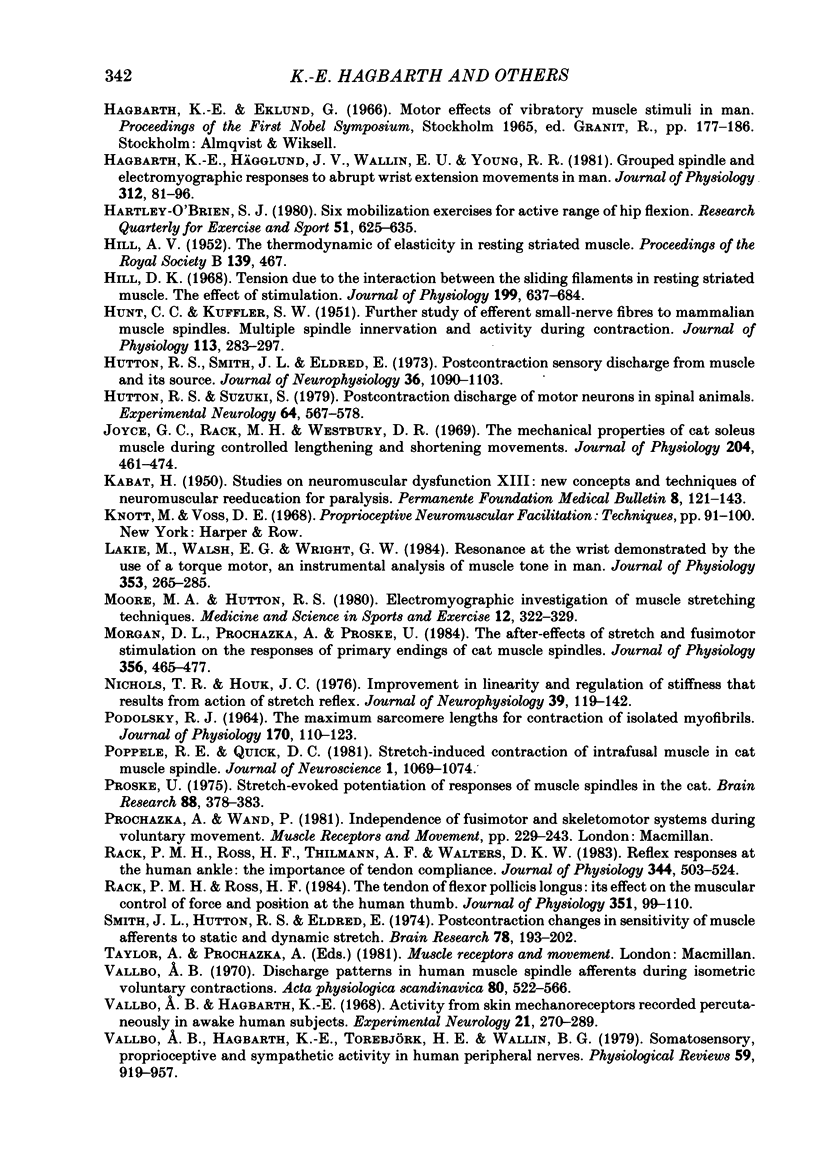
Selected References
These references are in PubMed. This may not be the complete list of references from this article.
- Brown M. C., Goodwin G. M., Matthews P. B. After-effects of fusimotor stimulation on the response of muscle spindle primary afferent endings. J Physiol. 1969 Dec;205(3):677–694. doi: 10.1113/jphysiol.1969.sp008990. [DOI] [PMC free article] [PubMed] [Google Scholar]
- Enoka R. M., Hutton R. S., Eldred E. Changes in excitability of tendon tap and Hoffmann reflexes following voluntary contractions. Electroencephalogr Clin Neurophysiol. 1980 Jun;48(6):664–672. doi: 10.1016/0013-4694(80)90423-x. [DOI] [PubMed] [Google Scholar]
- HAGBARTH K. E. Post-tetanic potentiation of myotatic reflexes in man. J Neurol Neurosurg Psychiatry. 1962 Feb;25:1–10. doi: 10.1136/jnnp.25.1.1. [DOI] [PMC free article] [PubMed] [Google Scholar]
- HUNT C. C., KUFFLER S. W. Further study of efferent small-nerve fibers to mammalian muscle spindles; multiple spindle innervation and activity during contraction. J Physiol. 1951 Apr;113(2-3):283–297. doi: 10.1113/jphysiol.1951.sp004572. [DOI] [PMC free article] [PubMed] [Google Scholar]
- Hagbarth K. E., Hägglund J. V., Wallin E. U., Young R. R. Grouped spindle and electromyographic responses to abrupt wrist extension movements in man. J Physiol. 1981 Mar;312:81–96. doi: 10.1113/jphysiol.1981.sp013617. [DOI] [PMC free article] [PubMed] [Google Scholar]
- Hartley-O'Brien S. J. Six mobilization exercises for active range of hip flexion. Res Q Exerc Sport. 1980 Dec;51(4):625–635. doi: 10.1080/02701367.1980.10609323. [DOI] [PubMed] [Google Scholar]
- Hill D. K. Tension due to interaction between the sliding filaments in resting striated muscle. The effect of stimulation. J Physiol. 1968 Dec;199(3):637–684. doi: 10.1113/jphysiol.1968.sp008672. [DOI] [PMC free article] [PubMed] [Google Scholar]
- Hutton R. S., Smith J. L., Eldred E. Postcontraction sensory discharge from muscle and its source. J Neurophysiol. 1973 Nov;36(6):1090–1103. doi: 10.1152/jn.1973.36.6.1090. [DOI] [PubMed] [Google Scholar]
- Hutton R. S., Suzuki S. Postcontraction discharge of motor neurons in spinal animals. Exp Neurol. 1979 Jun;64(3):567–578. doi: 10.1016/0014-4886(79)90232-2. [DOI] [PubMed] [Google Scholar]
- Joyce G. C., Rack P. M., Westbury D. R. The mechanical properties of cat soleus muscle during controlled lengthening and shortening movements. J Physiol. 1969 Oct;204(2):461–474. doi: 10.1113/jphysiol.1969.sp008924. [DOI] [PMC free article] [PubMed] [Google Scholar]
- Lakie M., Walsh E. G., Wright G. W. Resonance at the wrist demonstrated by the use of a torque motor: an instrumental analysis of muscle tone in man. J Physiol. 1984 Aug;353:265–285. doi: 10.1113/jphysiol.1984.sp015335. [DOI] [PMC free article] [PubMed] [Google Scholar]
- Moore M. A., Hutton R. S. Electromyographic investigation of muscle stretching techniques. Med Sci Sports Exerc. 1980;12(5):322–329. [PubMed] [Google Scholar]
- Morgan D. L., Prochazka A., Proske U. The after-effects of stretch and fusimotor stimulation on the responses of primary endings of cat muscle spindles. J Physiol. 1984 Nov;356:465–477. doi: 10.1113/jphysiol.1984.sp015477. [DOI] [PMC free article] [PubMed] [Google Scholar]
- Nichols T. R., Houk J. C. Improvement in linearity and regulation of stiffness that results from actions of stretch reflex. J Neurophysiol. 1976 Jan;39(1):119–142. doi: 10.1152/jn.1976.39.1.119. [DOI] [PubMed] [Google Scholar]
- PODOLSKY R. J. THE MAXIMUM SARCOMERE LENGTH FOR CONTRACTION OF ISOLATED MYOFIBRILS. J Physiol. 1964 Jan;170:110–123. doi: 10.1113/jphysiol.1964.sp007317. [DOI] [PMC free article] [PubMed] [Google Scholar]
- Poppele R. E., Quick D. C. Stretch-induced contraction of intrafusal muscle in cat muscle spindle. J Neurosci. 1981 Oct;1(10):1069–1074. doi: 10.1523/JNEUROSCI.01-10-01069.1981. [DOI] [PMC free article] [PubMed] [Google Scholar]
- Proske U. Stretch-evoked potentiation of responses of muscle spindles in the cat. Brain Res. 1975 May 2;88(2):378–383. doi: 10.1016/0006-8993(75)90403-5. [DOI] [PubMed] [Google Scholar]
- Rack P. M., Ross H. F. The tendon of flexor pollicis longus: its effects on the muscular control of force and position at the human thumb. J Physiol. 1984 Jun;351:99–110. doi: 10.1113/jphysiol.1984.sp015235. [DOI] [PMC free article] [PubMed] [Google Scholar]
- Rack P. M., Ross H. F., Thilmann A. F., Walters D. K. Reflex responses at the human ankle: the importance of tendon compliance. J Physiol. 1983 Nov;344:503–524. doi: 10.1113/jphysiol.1983.sp014954. [DOI] [PMC free article] [PubMed] [Google Scholar]
- Smith J. L., Hutton R. S., Eldred E. Postcontraction changes in sensitivity of muscle afferents to static and dynamic stretch. Brain Res. 1974 Sep 27;78(2):193–202. doi: 10.1016/0006-8993(74)90546-0. [DOI] [PubMed] [Google Scholar]
- Vallbo A. B. Discharge patterns in human muscle spindle afferents during isometric voluntary contractions. Acta Physiol Scand. 1970 Dec;80(4):552–566. doi: 10.1111/j.1748-1716.1970.tb04823.x. [DOI] [PubMed] [Google Scholar]
- Vallbo A. B., Hagbarth K. E. Activity from skin mechanoreceptors recorded percutaneously in awake human subjects. Exp Neurol. 1968 Jul;21(3):270–289. doi: 10.1016/0014-4886(68)90041-1. [DOI] [PubMed] [Google Scholar]
- Vallbo A. B., Hagbarth K. E., Torebjörk H. E., Wallin B. G. Somatosensory, proprioceptive, and sympathetic activity in human peripheral nerves. Physiol Rev. 1979 Oct;59(4):919–957. doi: 10.1152/physrev.1979.59.4.919. [DOI] [PubMed] [Google Scholar]


